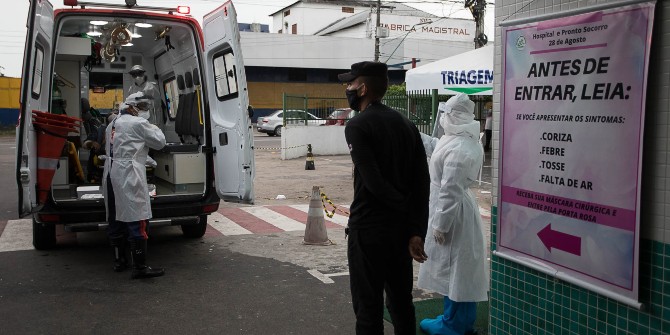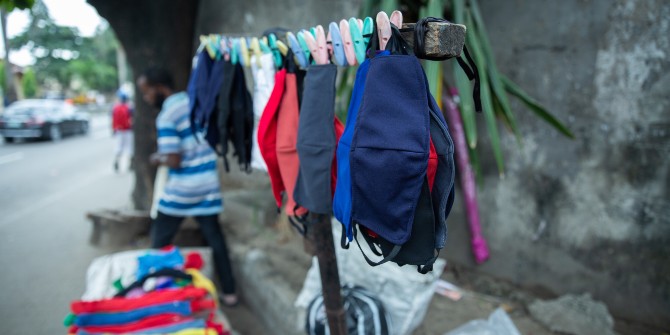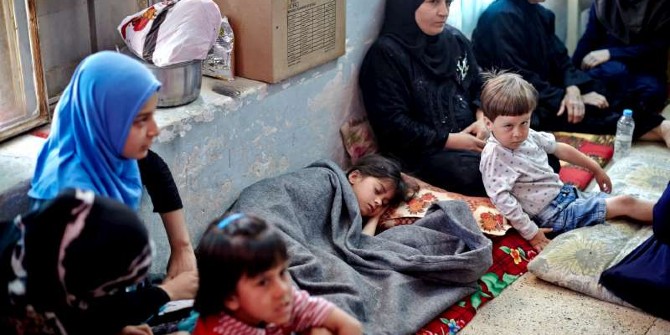Private and public debt has soared as a result of lockdowns and policies to address the COVID-19 health emergency. As part of the LSE Maryam Forum, Ricardo Reis (LSE) chaired a panel discussion on the debt problem, which is key to financing the global response to COVID-19. Reis and Jintao Zhu (LSE) report on the insights.
How should we handle corporate debt?
Cynthia Balloch (LSE) discussed the challenges of handling corporate debt using the bankruptcy system. The credit market was weak even before the pandemic, with corporate debt at a historical high. The dramatic fall in revenue caused by the pandemic created an additional need for borrowing. Globally, companies borrowed 60% more in the first half of this year relative to the same period in 2019.

Despite massive government support, we are likely to see companies in multiple sectors having difficulty in servicing their existing debts. Typically, the bankruptcy procedure – which allows companies to reorganise and renegotiate their obligations so that they can continue to operate – would ease this burden. However, using bankruptcy to deal with corporate debt in this pandemic presents three challenges.
Firstly, bankruptcy courts do not work well for all firms, particularly SMEs. Secondly, they struggle when they become inundated with cases, as is happening now. For example, in the US, only 350 judges are available to handle all corporate bankruptcy cases. Thirdly, bankruptcy proceedings require continuous financing to be available during the process. With a large number of firms defaulting, this financing is far from guaranteed.
More needs to be done to encourage firms and lenders to restructure private debt, reduce administrative costs, and improve their bankruptcy procedures. Governments should focus on understanding where the pandemic may lead to the widespread loss of organisational capital invested in established firms. They should provide financial incentives for restructuring where it is likely to prevent this loss. However, we also want to avoid keeping doomed firms alive. After all, the aim is to maintain growth while preventing widespread liquidations.
How can we support lower-income countries?
Patrick Bolton (Columbia Business School) discussed the global effort to support developing countries over the debt issue. In March, there was a sudden and huge capital outflow from emerging markets when the pandemic hit rich countries. Today, while developing countries are still mainly preoccupied by health and economic crises, the financial crisis is unfolding. Many countries face the dilemma of using their scarce financial capability to pay for debts, or covering health expenses.
Since March, over a hundred middle- and low-income countries have turned to the IMF for financial support. The G20 has initiated the DSSI (Debts Service Suspension Initiative). The G20, together with the Paris Club, agreed to suspend interest payments for International Development Association countries during 2020. So far, 41 of the 73 eligible countries have filed a request for DSSI. Of these, 32 of the 41 have approached the Paris Club for some kind of debt relief. However, this initiative only covers interest payments for official debts, which is only a fraction of overall payments. To further alleviate the debt burden, the G20 attempted to bring in private sector creditors to join debt relief efforts. However, until now the private sector has been standing on the sidelines. It justifies its inaction by the sudden reversed capital flow into emerging markets in the last few months. But it is not clear whether returning capital in the market can substantially alleviate the heavy financial burden these countries face.
In brief, despite some efforts and hard work, the debt problem has not had enough attention. We lack accurate pricing of the credit risk issues for both sovereign and corporate debt. How we deal with this will be a major challenge.
A case study in the cost of financing debt: Brazil
Carlos Viana de Carvalho (Asset 1 and PUC-Rio) discussed the challenges faced by an emerging economy, using the case study of Brazil. Brazil had started various economic reforms before the pandemic. Beginning in 2016, it had conducted a series of structural reforms which were just starting to pay off. Many other emerging markets had made similar progress.
The pandemic shock hit every country, but the consequences have been very different because countries were at different starting points. Emerging markets like Brazil do not have the fiscal space for necessary spending. They had been trying to consolidate public finances and bring public debt down. The pandemic forced the state to postpone these efforts and to start emergency spending in order to save lives, prevent corporate bankruptcies and maintain social stability.
The challenge of financing the response to the pandemic is larger for emerging markets like Brazil. They face limits to the demand for their assets and public debts. When countries with solid institutions and a long history of stability issue reserve currency, there is plenty of demand for their “safe assets”. When the pandemic shock hit, the demand for these safer assets went up. Interest rates went down and so did the cost of financing. However, for countries like Brazil, whose assets are perceived as risky, the risk premium goes up when the shock arrives. The cost of financing becomes more expensive.
Advice for governments? Convince the market you have a long-term plan to rein in spending
At this stage, governments in emerging markets should be cautious about policy decisions. While a temporary increase in public debt is unavoidable, they should make decisions that will convince society and investors that the government is still able to go back to a sustainable level of debts in the long run. If market confidence is established, the country will be able to enjoy low financing costs. However, if the government ends up increasing expenditure permanently, it will not be able to go back to a sustainable path for public finance. Current financing efforts will be expensive. Long-term reform efforts can be overthrown thanks to COVID-19 and, although the global market seems to have become increasingly optimistic, emerging countries will still be very susceptible to volatile global financial conditions.
This post represents the views of the authors and not those of the COVID-19 blog, nor LSE.




